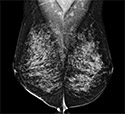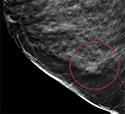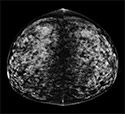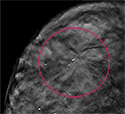3-D Mammography
About 3-D Mammography
We offer state-of-the-art digital imaging, including the most advanced technology: 3-D mammography.
Also called digital breast tomosynthesis or DBT, this technology obtains multiple images of the breast and reconstructs them into "thin slices" rather than a single image. This may improve the detection of small cancers and has been shown to reduce the number of patients recalled for more imaging due to overlapping normal tissues (false positives).
3-D mammography is used for screening patients, and can also be utilized as an additional screening tool if a patient's 2-D mammogram shows dense breast tissue.
Comparing 3-D Mammography to 2-D Mammography
(click to enlarge images)
Having a 3-D Mammogram
3-D mammography still uses breast compression, just like routine 2-D mammograms, and takes about 10 seconds longer per image to perform. While it does increase the radiation dose to the breast tissues, the total radiation dose remains below federal standards for mammography.
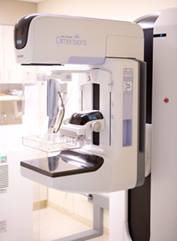 Both 2-D and 3-D mammogram technology are used for our screening patients.
Mammograms using the 3-D technology are performed in rotation with our other 2-D technology, and it is also used for research purposes.
Both 2-D and 3-D mammogram technology are used for our screening patients.
Mammograms using the 3-D technology are performed in rotation with our other 2-D technology, and it is also used for research purposes.
Please tell your technologist prior to your exam if you have a preference for having your screening mammogram utilizing the 3-D imaging, or if you would rather have the routine 2-D imaging done. You (or your referring physician) are also welcome to request 3-D imaging when scheduling an appointment for your screening mammogram.
3-D mammography is currently available at our Boston and Chestnut Hill locations.

